The University Art Museum, Tokyo University of the Arts
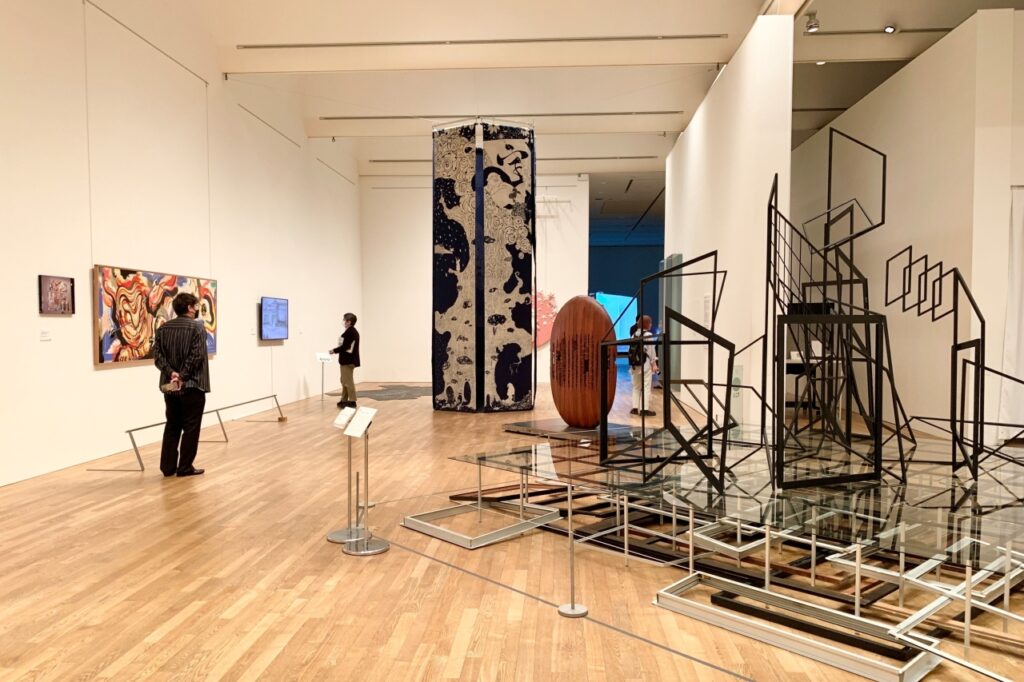
The “Purchased Exhibition -Geidai Collection Exhibition 2023-“, which introduces carefully selected excellent works purchased by Tokyo University of the Arts from among the graduation and completion works, is being held at the University Art Museum, Tokyo University of the Arts from March 31, 2023. . (Exhibition period is until May 7)
*All works introduced here are owned by Tokyo University of the Arts.

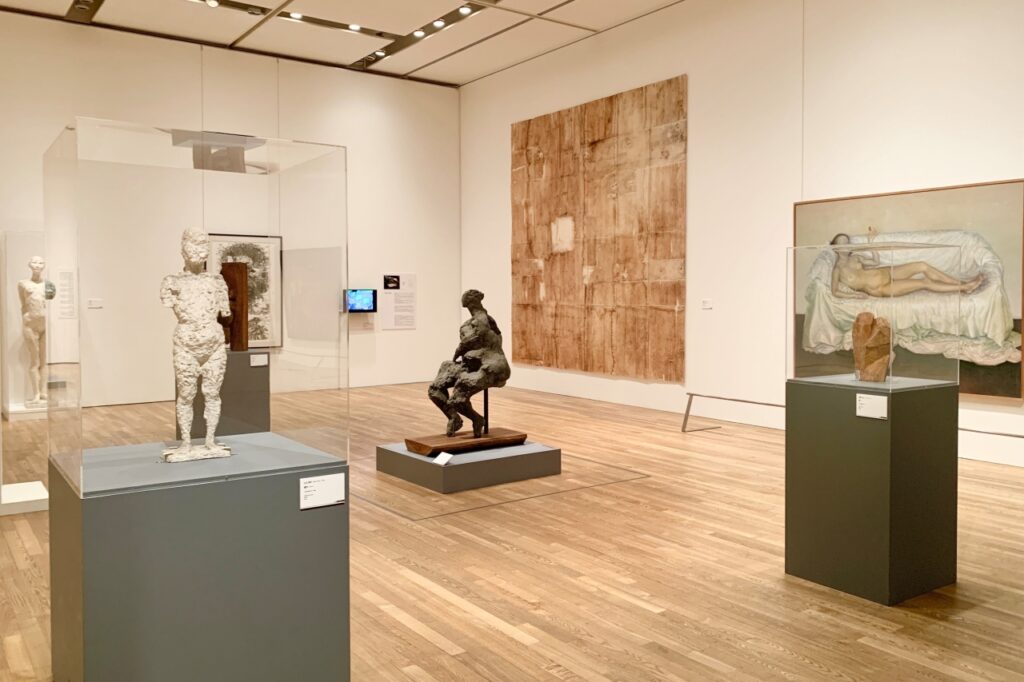
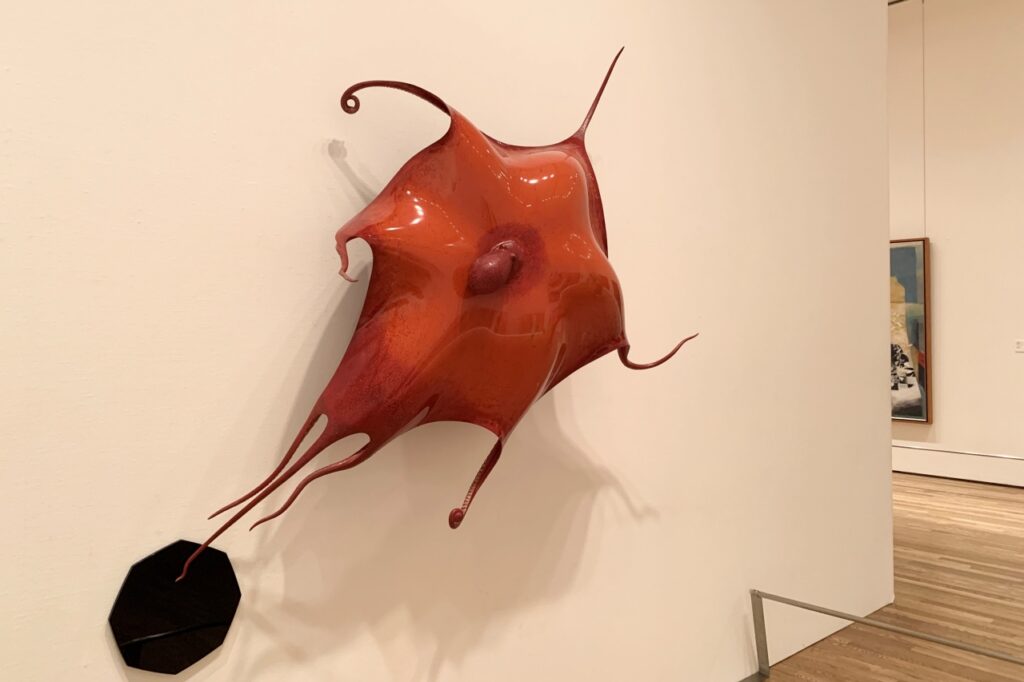
Tokyo University of the Arts (hereafter referred to as Geidai) has been collecting a wide variety of art works and materials since its predecessor Tokyo Fine Arts School opened in 1889 (Meiji 22). As an opportunity to widely display the vast collection, the university art museum holds the “Geidai Collection Exhibition” every year with a theme.
The 2023 “Geidai Collection Exhibition” began in 1953 after the war. Purchasing system”.
It seems that there was a tradition of purchasing graduation works from Tokyo Fine Arts School and collecting them to use as educational materials, and currently the number of “student works” in the collection of Tokyo University of the Arts exceeds 10,000.
This exhibition, “Kaijoten” , collects about 100 of these works, an unprecedented number, and looks back on the history of the University of the Arts and the birthplace of modern and contemporary art history in Japan. This is a unique exhibition that connects Japanese paintings by major stars in the Meiji era to mixed media installations by up-and-coming artists in the Reiwa era.
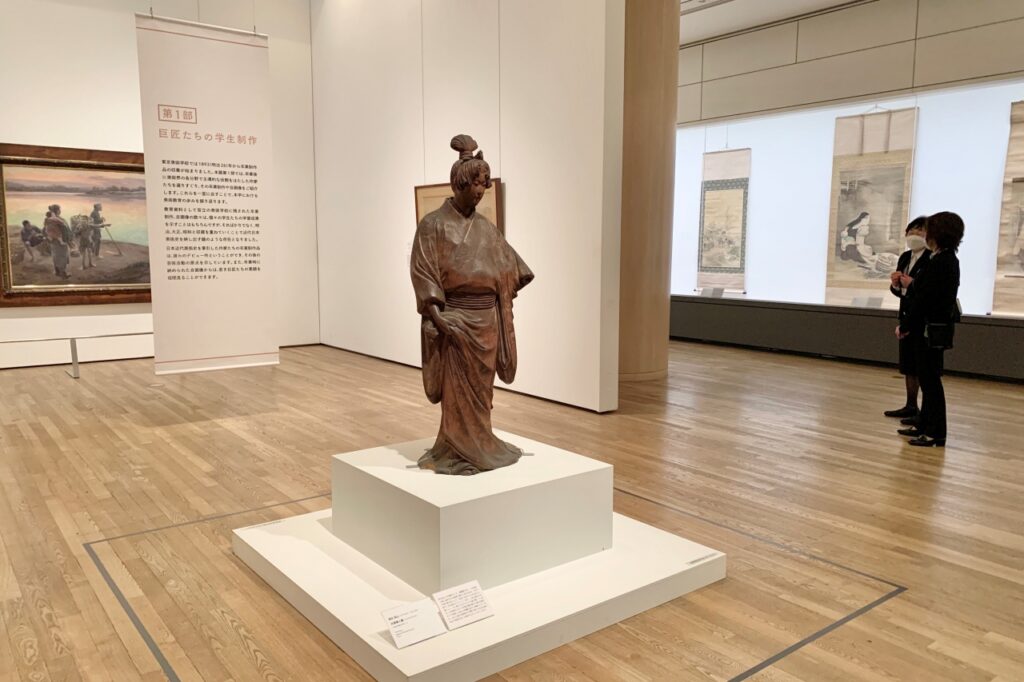
The exhibition consists of two parts.
Part 1, “Student Works of Masters,” focuses on graduation works from the Tokyo School of Fine Arts from the Meiji period to the early Showa period. Selected artists who have played leading roles in various fields of the art world after graduating, will exhibit their graduation work, which can be called their debut work, as well as “self-portraits” that were customarily worked on at the same time as their graduation work. I’m here.
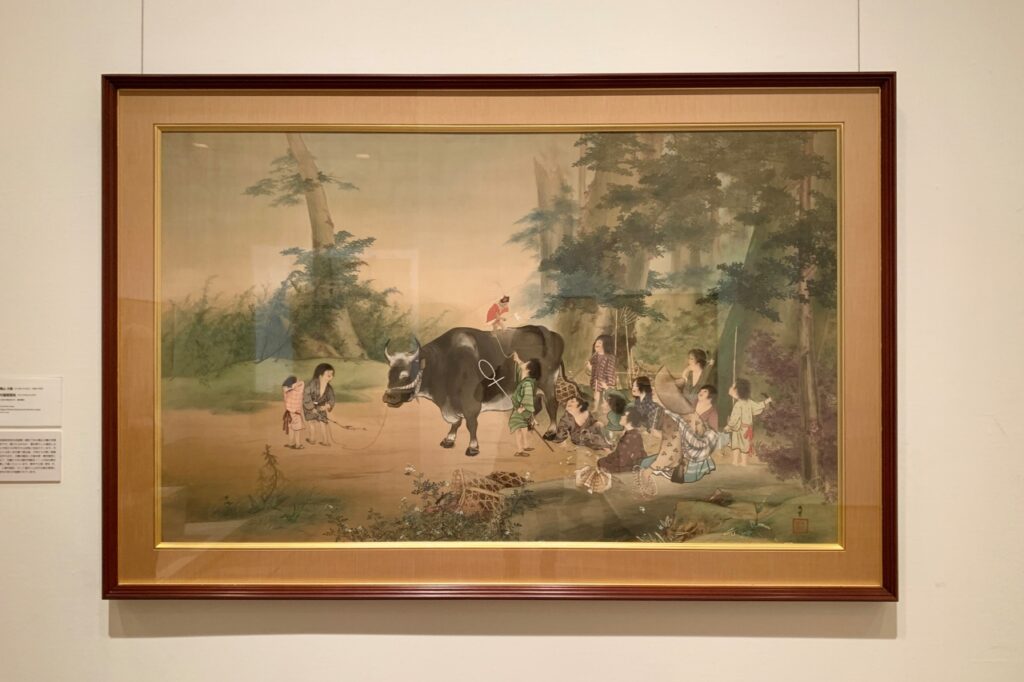
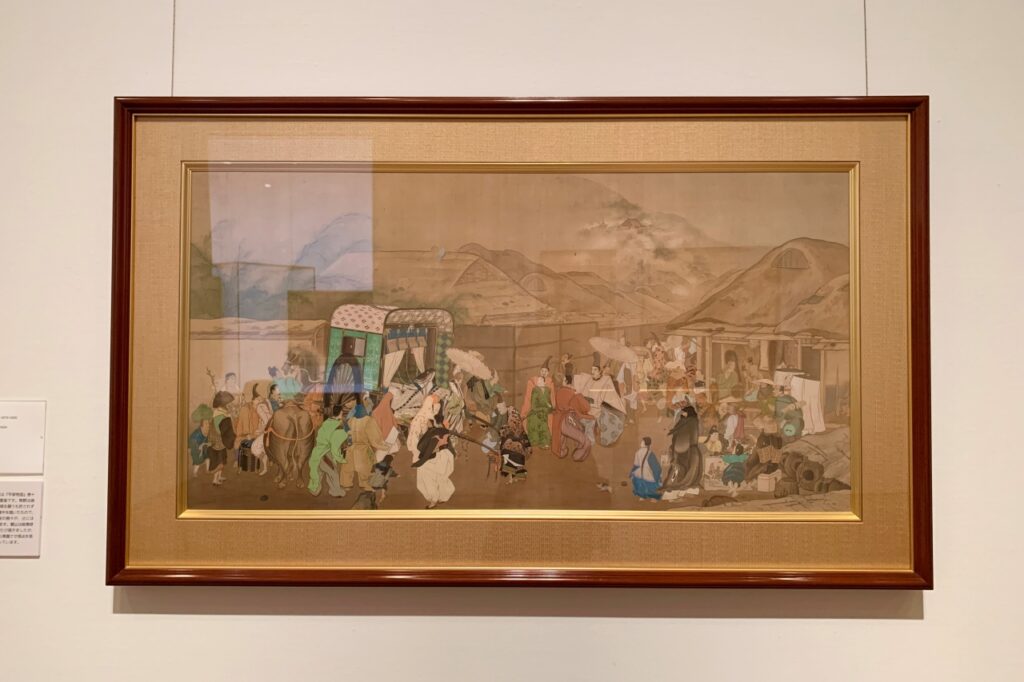
As soon as we entered the venue, we were immediately greeted by Taikan Yokoyama, a first-year student of the Tokyo School of Fine Arts, with his Muradō Kanen-o (1893) and Kanzan Shimomura’s Cherry Blossom Viewing at Kumano Gozen (1894). Hazan Itaya’s “Genroku Bijin” (1984) welcomes us with an impressive line-up.
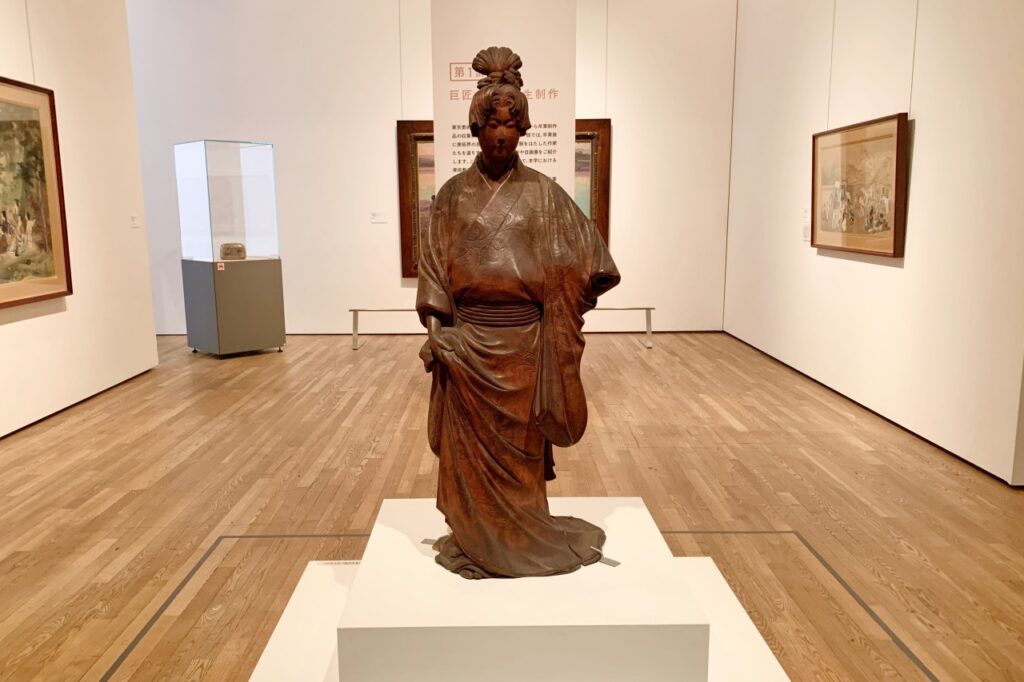
Hazan Itaya achieved great success as a pottery artist, but it wasn’t until his mid-20s that he started working on pottery in earnest. While in school, he learned sculptural techniques from Koun Takamura, who advocated realism in modern sculpture. The kosode floral arabesque pattern is expressed in relief, which is similar to Hayama’s later pottery works. In a sense, it can be said to be one of the origins of the potter Hayama.
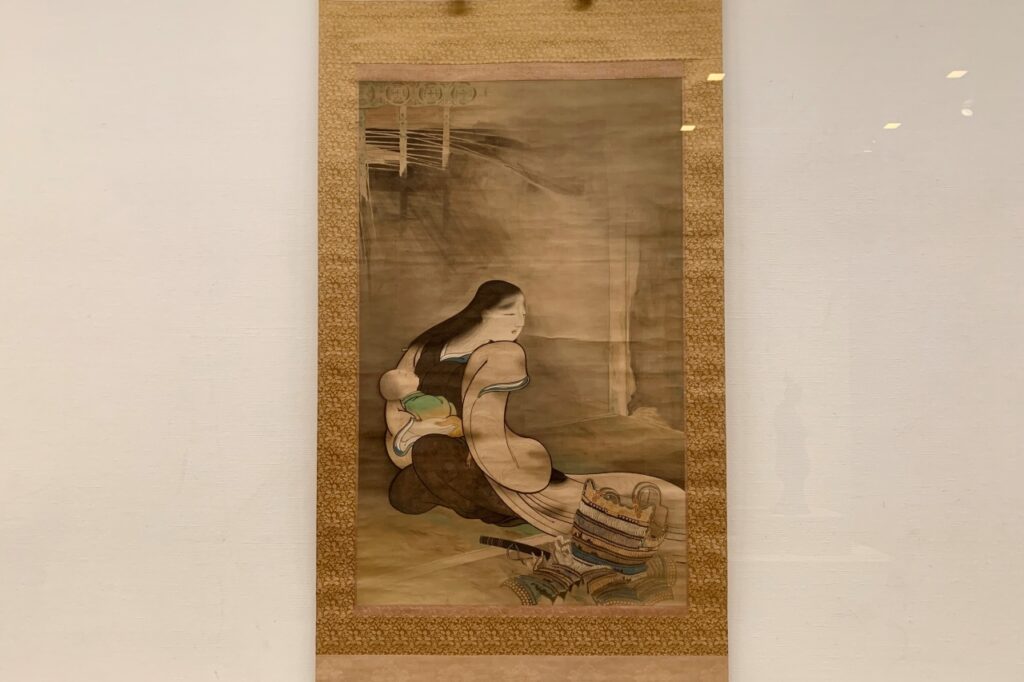
What caught my attention was Widow and Orphan (1895) by Shunso Hishida , a genius painter who produced many masterpieces but died at the young age of 36. The expression of a woman who lost her husband in battle is full of tragedy, giving us a premonition of the fate that awaits us in the future.
When the Tokyo School of Fine Arts was established, it seems that historical paintings with historical events and the stories that depict them as the theme were positioned as issues in exploring new Japanese paintings. This work is said to have been drawn based on the military chronicle Taiheiki, but the fact that the theme was chosen to depict the tragedy of those caught up in the war, rather than the heroic picture scrolls of war, dates back to the Sino-Japanese War. The production background at that time was not irrelevant.
In fact, this work was severely criticized by a professor for being a “monster picture”, but it was purchased by Tenshin Okakura, who was the principal of the school. This episode provides a glimpse into the educational policy and philosophy of Tokyo Fine Arts School, which emphasizes what meaning is in painting that work now, and what meaning should be given to it.
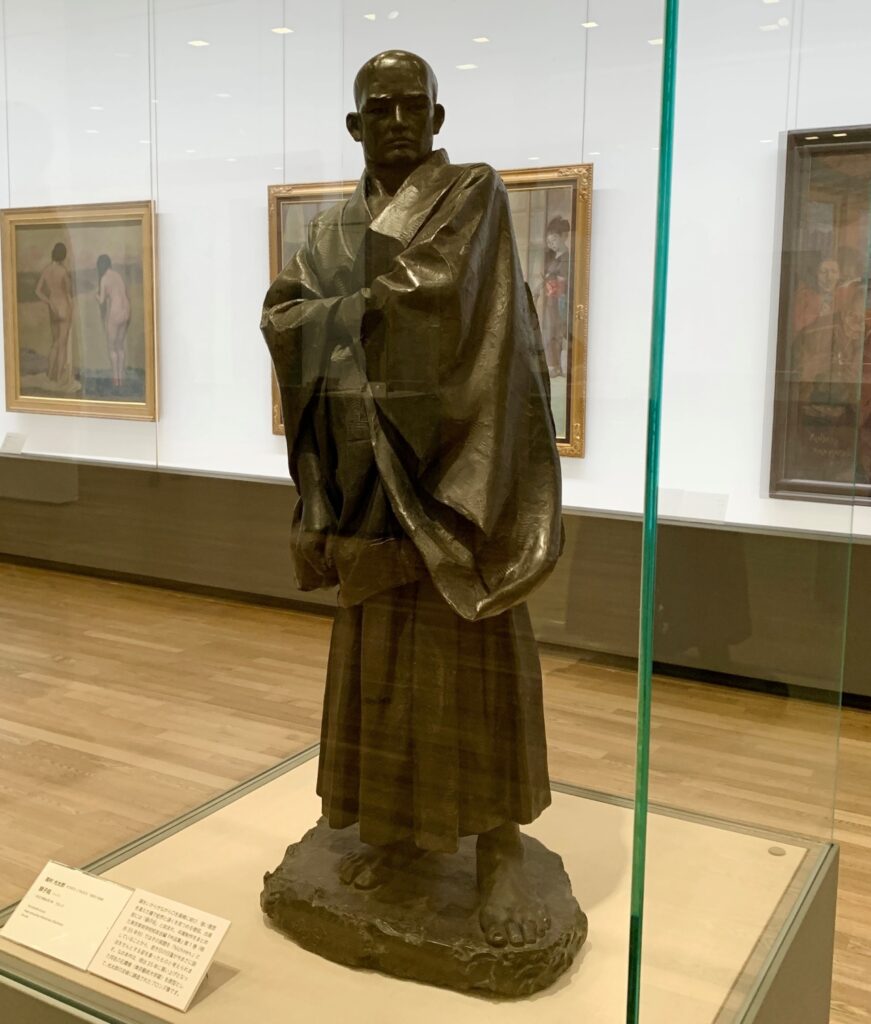


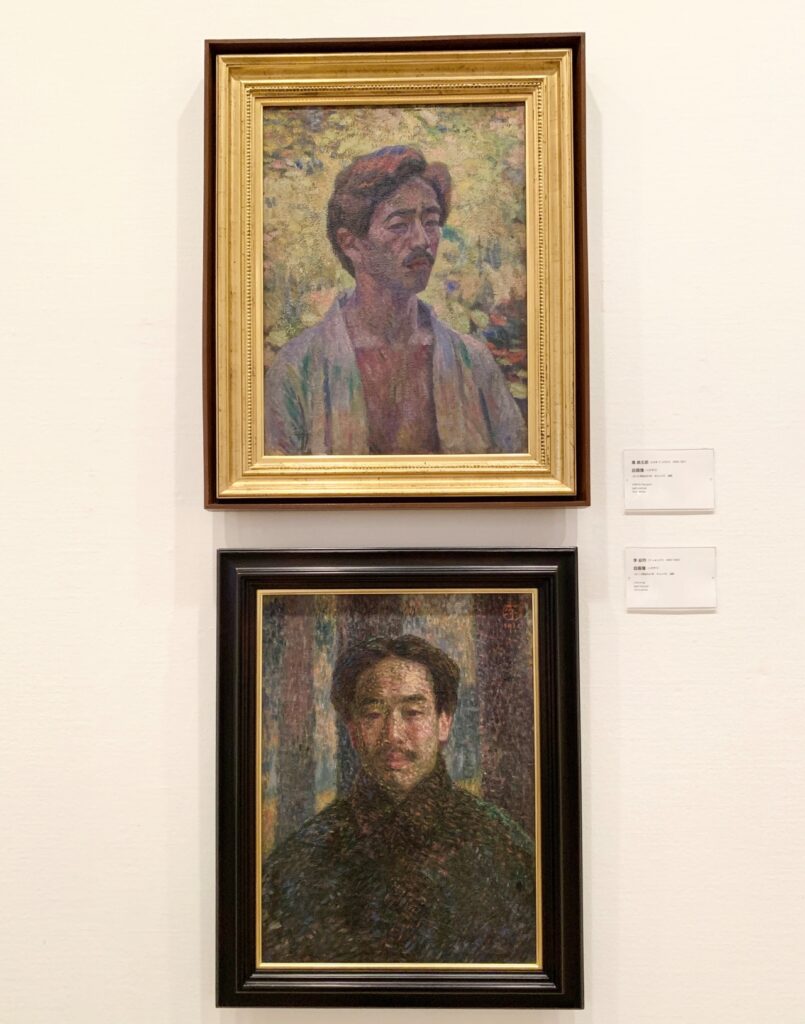
The custom of “taking a self-portrait at school upon graduation” was born under the guidance of Seiki Kuroda, who was a professor at the Western painting department established in 1896. I was able to confirm the learning achievements of masters such as Tetsugoro Yorozu, Shigeru Aoki, and Tsuguharu Fujita, whose graduation projects were unexpectedly unsuccessful, and whose talents blossomed after graduation.
When I think that this tradition of excavating the past, which is almost unparalleled in the world, has now formed a large collection that is extremely useful for comprehending the history of modern and contemporary Japanese art, Kuroda I can’t help but feel the magnitude of Seiki’s achievements.
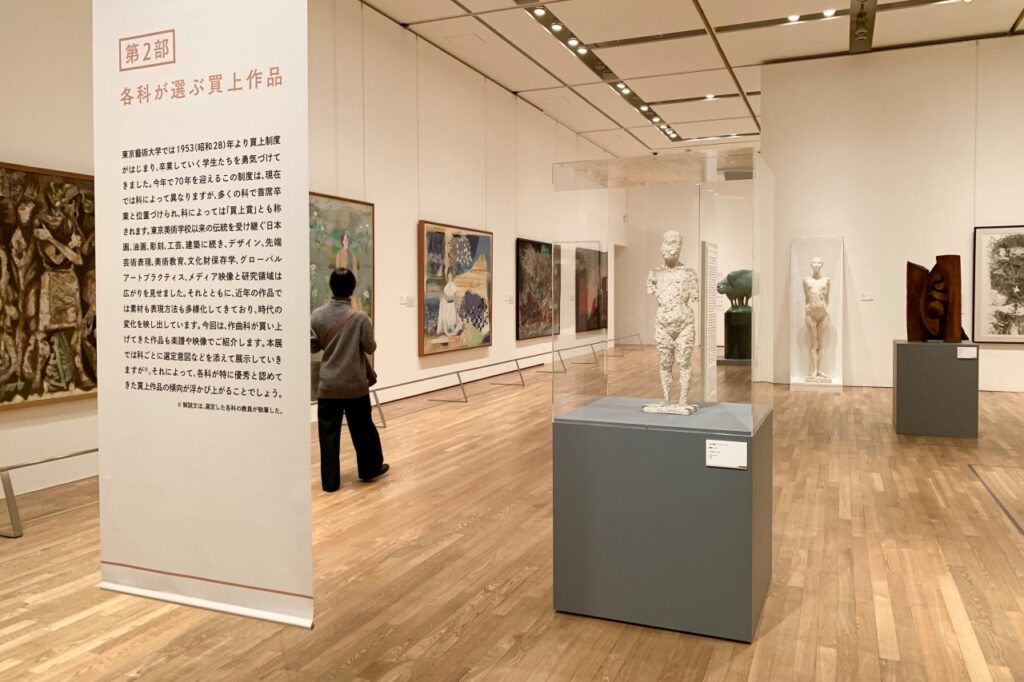
This year marks the 70th anniversary of the Tokyo University of the Arts’ purchase system.
In Part 2, “Purchased works selected by each department” , all 12 departments with a purchase system (Japanese painting, oil painting, sculpture, crafts, design, architecture, advanced art expression, art education, cultural property conservation studies, global art practice, A total of 52 purchased works are introduced along with their selection intentions. It highlights the tendency of the works that each department has recognized as particularly excellent.
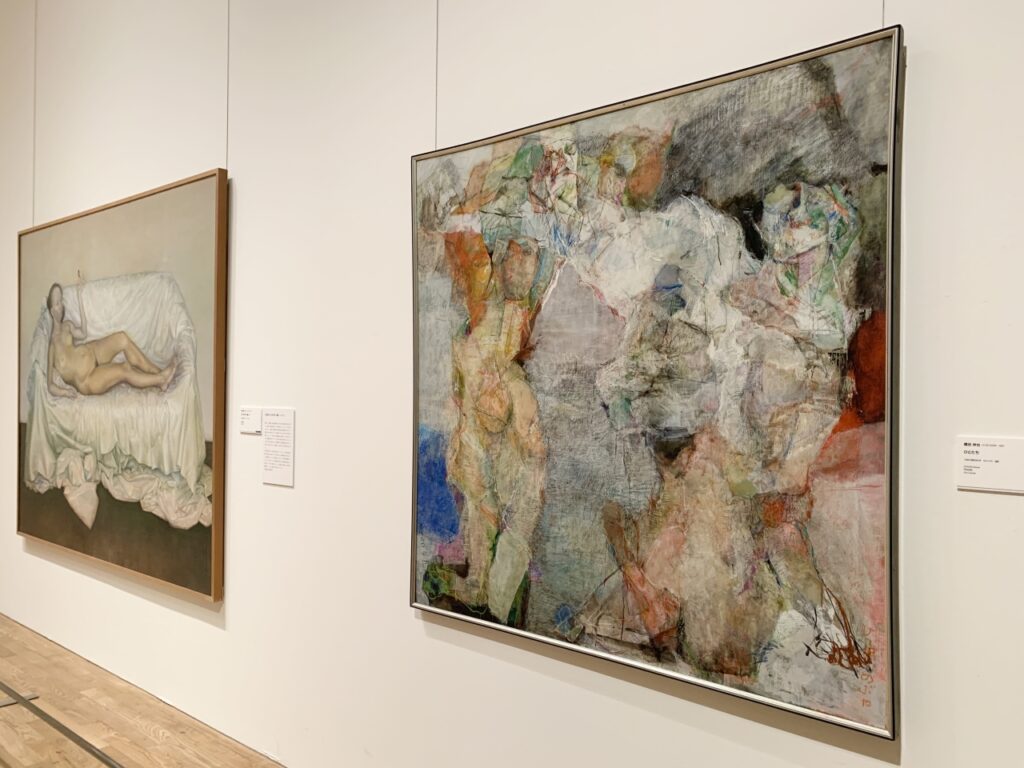

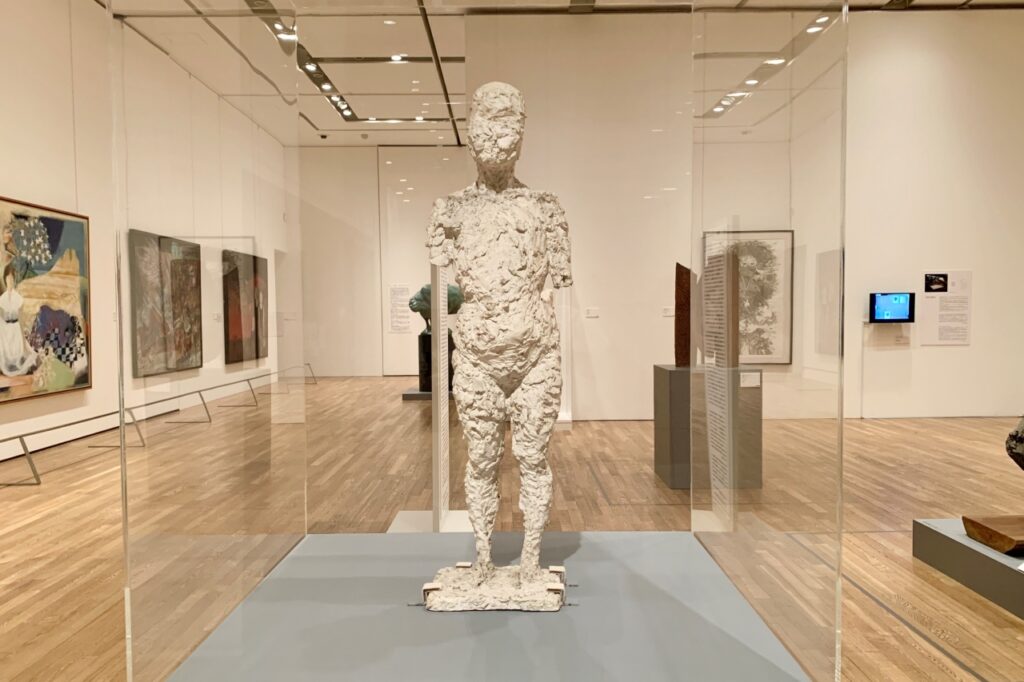
Looking at the exhibits in each department, the “Japanese painting major” picks up works that particularly express the atmosphere and characteristics of that era, while the “sculpture department” selects female artists selected for purchase works from the era. was taking the drastic selection method of selecting five people in order of the oldest. The selection and commentary of the works are done by the professors of each department from their own perspective, so it’s interesting to see their individuality.
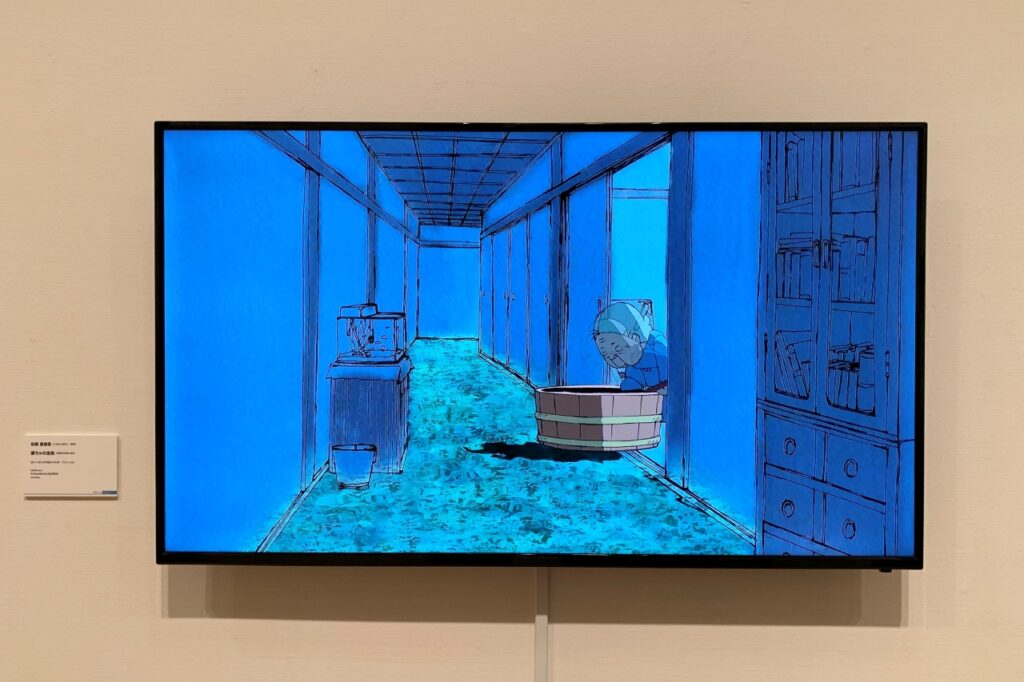
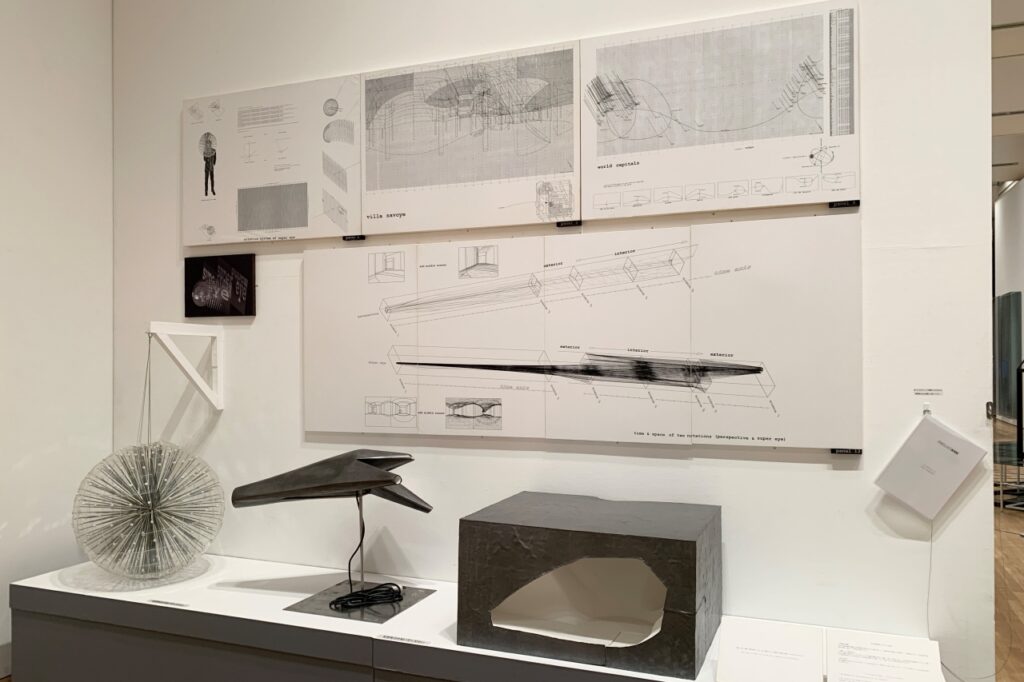

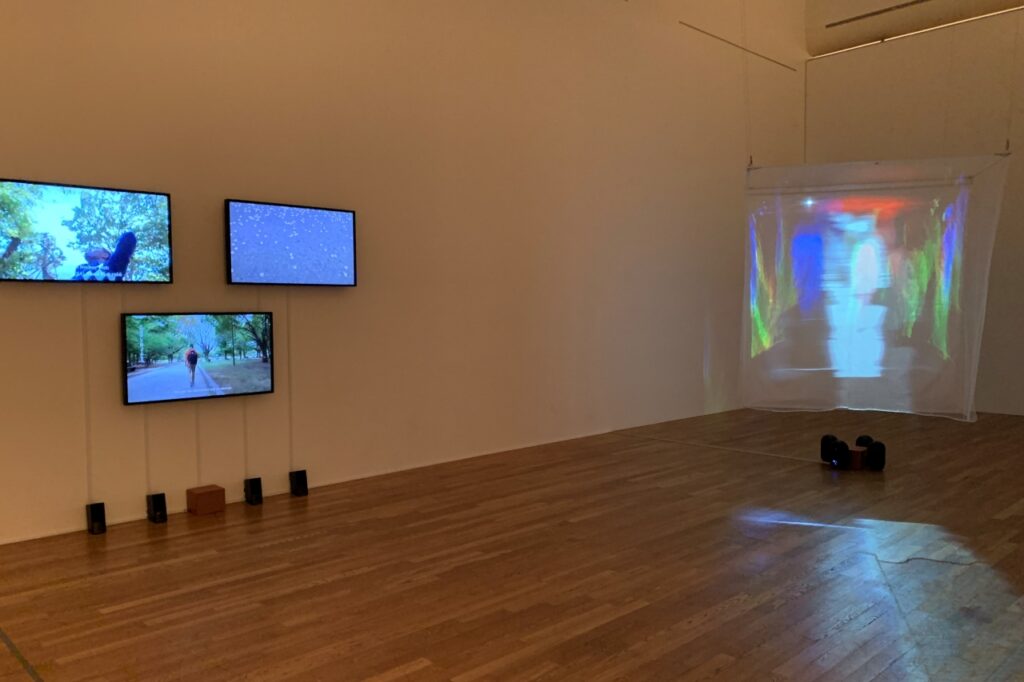
The exhibition of the newest major at Tokyo University of the Arts, the Global Art Practice Major (GAP), which was established in 2016, was particularly interesting. GAP, which explores cross-disciplinary contemporary art practices that transcend existing cultural frameworks, attracts students from around the world with different languages, cultures, and gender backgrounds. There are also students from fields other than the arts.
From the works purchased by GAP, I was able to sense the diversification of research areas and methods of expression at Tokyo University of the Arts in recent years. For example, Sixte Parc Kakinda’s “Intimate Moments/Monologue” (2019) is an installation work of drawings and video.
Confronting the historical fact that uranium mined in a mine in the Democratic Republic of the Congo, where the artist has roots, was brought to the United States and used in the atomic bombs dropped on Hiroshima and Nagasaki, he conducted careful research on the victims of the atomic bombing of Hiroshima. . It is finished as a work that encourages consideration of the social and economic reasons surrounding the mining of mineral resources and the impact of their use on mankind and nature.
In his comments, the artist expressed his disappointment that, although he considered himself to be a bridge connecting Japan and Congo, his drawing performance in Hiroshima went unnoticed by the Japanese people, saying, “I was an invisible bridge.” rice field. The fact that this work exists as a result of GAP’s education and that it has been purchased seems to have a great significance in that it is an awareness of the racially closed nature of the Japanese people.
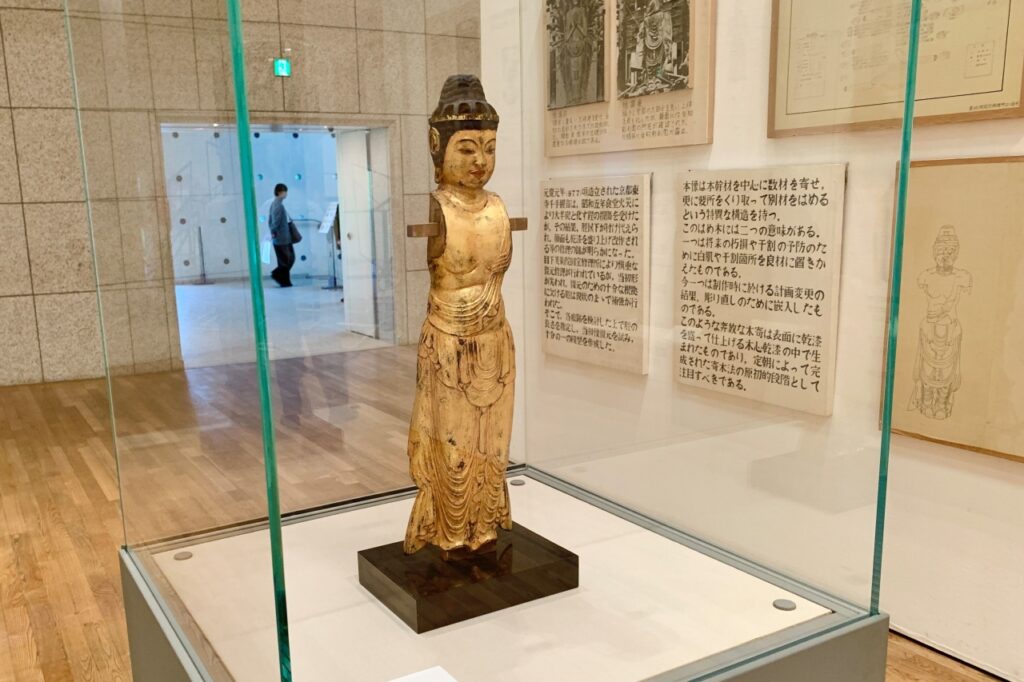
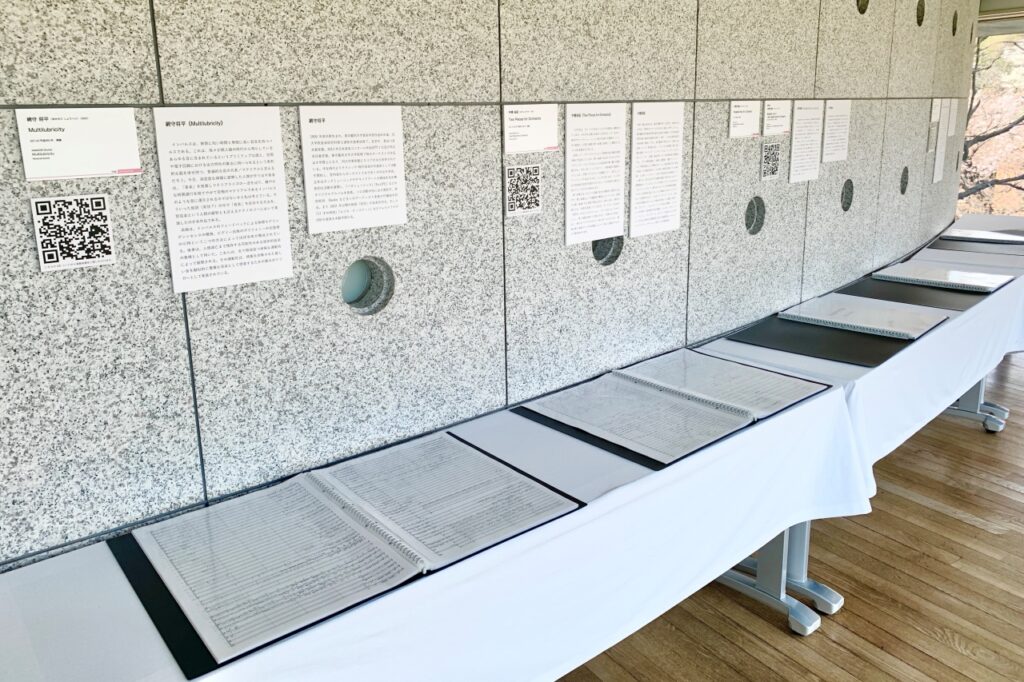
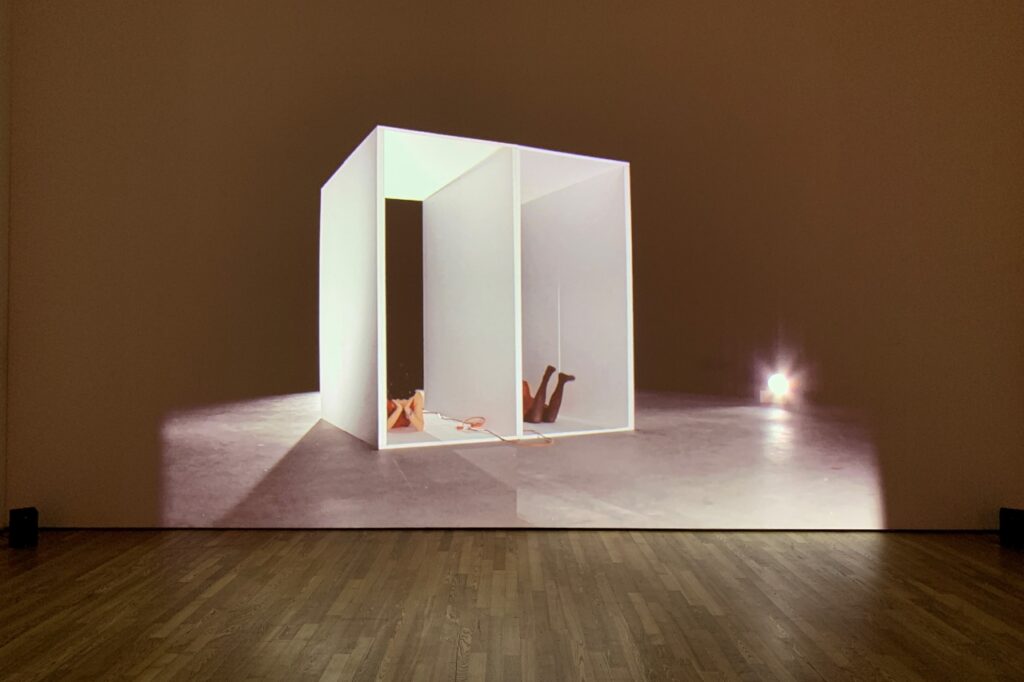
Of the works exhibited in Part 2, the one that left the strongest impression on me was Tomomi Maruyama’s One Thousand and One Nights (1992) from the Kogei Department.

In the “Crafts Department,” which consists of seven fields: engraving, hammering, casting, lacquer art, pottery, dyeing, and material modeling (wood and glass), students learn advanced traditional techniques through materials and acquire the ability to further develop them. is intended to be attached.
“Thousand and One Nights” is a work that uses excellent metal hammering techniques to depict the wind that blows through mountains and forests as a god of wind and expresses the human body as a motif. I was fascinated by the dynamism of the body, which seemed to be swimming in the water, and the sense of presence that had a story behind it. According to research, the artist Tomomi Maruyama is currently a professor of metal hammering at the Department of Crafts at Tokyo University of the Arts. I am producing.
According to the commentary, this work seems to have been highly evaluated for the fact that it “expanded the possibilities of expression as a metal work by fusing metal hammering techniques and welding.” As an artist and an educator, he continues to expand the possibilities of expression in his metal-forged works.
The hands-on installation of Tomomi Oka, 1-8-19 Yanagi-cho, Okayama City (2017), a member of the Intermedia Art Department, was also memorable.
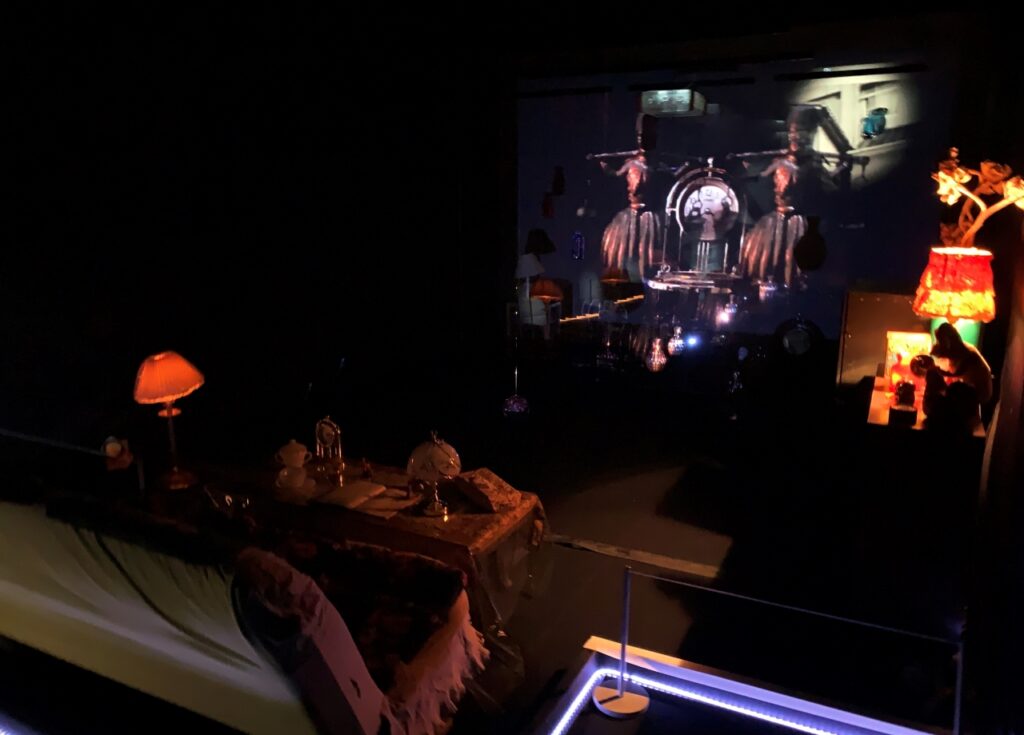
Established in 1999, the Intermedia Art Department pursues creative expression using a variety of methods that transcend the framework of specific media. While aiming for activities that respond to changing information and environments, we are exploring the possibilities of art in society.
Tomomi Oka, who was recognized as the top graduate of the Intermedia Art Department, is an up-and-coming artist who uses video and spatial design to create installation works with themes such as personal memories and obsolete customs. 《1-8-19 Yanagi-cho, Okayama City》 is a room-type installation with the theme of my late grandmother’s house, which actually exists in Okayama, and the memories associated with it.
In a dark room filled with objects such as real furniture and small items, the image of the artist’s memory of his grandmother is layered between virtual and real images by combining video projections, reflections, lighting, and several acrylic plates. is launching. There existed a time-axis space that was neither past nor present. The video is about 7 minutes long, but it gives you the satisfaction of watching a movie. The eerily flickering lights and the eerily floating picture of my grandmother have a bit of a Japanese-style horror feel to them, and if you stare at it, you’ll feel as if your consciousness has been sucked into another world.
It is a work that you should definitely see when you visit this exhibition.
At the venue, there are wonderful works of various eras and various methods of expression, but when you think about it, the fact that most of the artists were in their 20s at the time they were created is pretty amazing. It feels like
Some may have been called masters later on, while others may have left creation after graduating. Nevertheless, it is clear that all the works are a culmination and a mass of passion that the students who were nothing at that time poured everything they learned at the top art university.
There must be many works that do not know how many years it will be before the next time they come out. We hope that you will take this rare opportunity to look back on the history of education at Tokyo University of the Arts and feel the power of works that have not lost their brilliance over the years.
“Purchased Exhibition -Geidai Collection Exhibition 2023-” Overview
| exhibition period | Friday, March 31, 2023 to Sunday, May 7, 2023 |
| venue | The University Art Museum, Tokyo University of the Arts Main Building |
| Opening hours | 10:00 a.m. to 5:00 p.m. (Admission until 4:30 p.m.) |
| closing day | Mondays (However, the museum will be open on Monday, May 1) |
| viewing fee | General 1,200 yen, University students 500 yen |
| organizer | Tokyo University of the Arts, The Yomiuri Shimbun |
| inquiry | 050-5541-8600 (Hello Dial) |
| Official site | https://museum.geidai.ac.jp/ |


